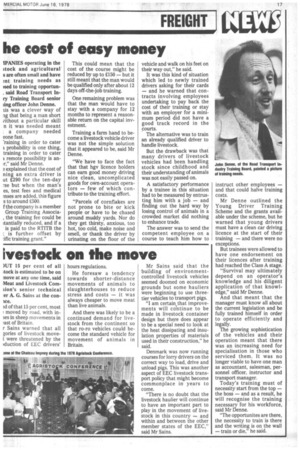ivestock on the move
Page 19

If you've noticed an error in this article please click here to report it so we can fix it.
JUT 15 per cent of all tock is estimated to be on move at any one time, said Meat and Livestock Com5i011'S senior technical :er A. G. Sains at the con id of that 15 per cent, most moved by road, with inses in sheep movements in !ast of Britain.
r Sains warned that all gories of livestock movewere threatened by the )duction of EEC drivers' hours regulations.
He foresaw a tendency towards shorter-distance movements of animals to slaughterhouses to reduce stress and costs — it was always cheaper to move meat than live animals.
And there was likely to be a continued demand for livestock from the continent so that ro-ro vehicles could become the standard vehicle for movement of animals in Britain. Mr Sains said that the .building of environmentcontrolled livestock vehicles seemed doomed on economic grounds but some hauliers were beginning to use threetier vehicles to transport pigs.
"I am certain that improvements will cntinue to be made in livestock container design but there does appear to be a special need to look at the heat dissipating and insulation properties of materials used in their construction," he said.
Denmark was now running courses for lorry drivers on the correct way to load, drive and unload pigs. This was another aspect of EEC livestock transport policy that might become commonplace in years to come.
"There is no doubt that the livestock haulier will continue to have an important part to play in the movement of livestock in this country — and within and between the other member states of the EEC," said Mr Sains.
















































































































